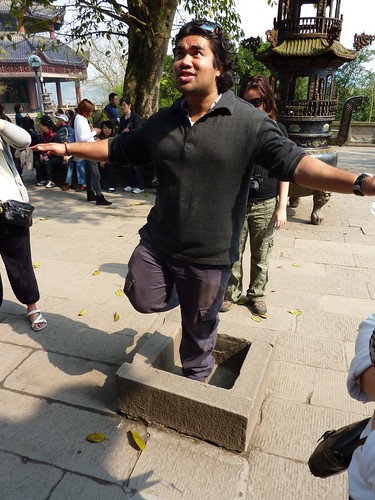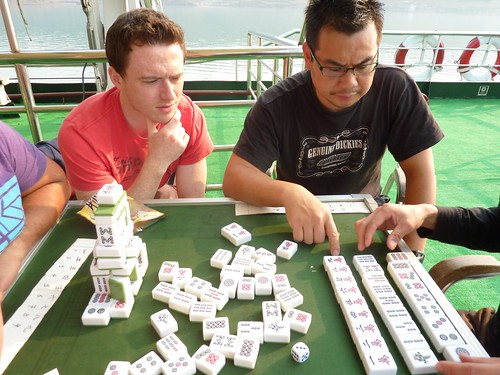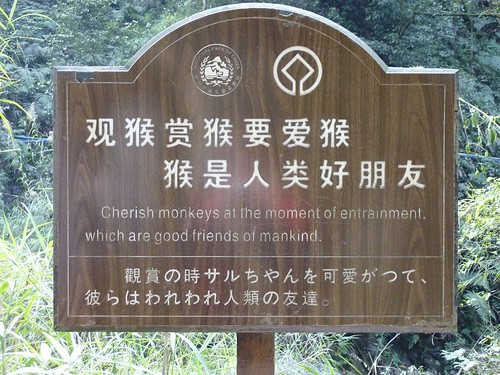Where to start? I've been here for five days now and I love it. As I said before, Hong Kong is a big relief after three weeks in mainland China. It's a proper, big, first-world city. There's lots of English everywhere, and it's fast and exciting and vibrant and it all just works. Take the metro system for example. Most people in Hong Kong use an "Octopus Card" which is a rechargeable card you can use to get on the metro and all buses. But it doesn't stop there. You can use the Octopus card for tourist sites like the tram that goes up Victoria Peak. In fact, it's not just a transport card, it's a "smart card payment system". Use it at the grocery store. Use it at the 7-11. Use it at McDonalds, at malls, cinemas, even pet stores. It's the all-purpose Hong Kong card. Brilliant. (And what is it with naming metro cards after see creatures? The equivalent in London is the Oyster Card…)
But back to me and Hong Kong. I left the group on Saturday, which was not hard at all. Of all the groups I've traveled with this is the once I felt the least connection with so on Saturday morning when I turned my face to the Hong Kong Metro, I was not filled with grief at our parting. I was off to my own hotel, and I while I had no plans for the day, that was, frankly, just how I liked it. It was only later that I realized it was the weekend of Palm Sunday, and the beginning of Lent. I've since decided I to give up group tours for Lent, so now I sleep the untroubled sleep of one who is no longer required to present herself in the lobby of the hotel at 6:45 am for a guided visit to the local chopstick factory. It is bliss.
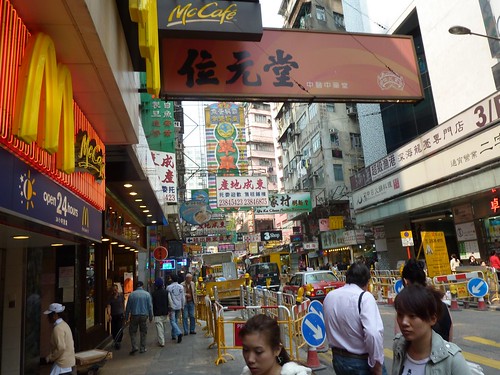 A typical street in Hong Kong near our first hotel. And I didn't TRY to get a McDonald's in the shot, they're just everywhere. Outnumbered only by 7-11s, which are more numerous than Starbucks in Vancouver.
A typical street in Hong Kong near our first hotel. And I didn't TRY to get a McDonald's in the shot, they're just everywhere. Outnumbered only by 7-11s, which are more numerous than Starbucks in Vancouver.
The hotel I'd booked, sort of by mistake, turned out to be in an enormous tower called Chungking Mansions. I thought I was booking a place recommended by the LP, but it turned out that it's very easy to get mixed up about hotels in Hong Kong, since each place seems to have several names. Chungking Mansions, though, turns out to be somewhat notorious. As the LP says:
"Chungking Mansions has been synonymous with budget accommodations in Hong Kong for decades. The crumbling block rising out of the prime real estate of Nathan Road is stacked with dirt-cheap hostels, guest houses, curry houses, immigrants and all manner of merchants. Rooms are usually miniscule and service is as rudimentary as you'd expect in the cheapest accommodation in town. And while it can seem pretty bleak, you can take comfort in knowing it used to be much worse."
Not exactly glowing praise. The place I ended up reserving was… ok. I thought I'd reserved a "Single Deluxe" room, but the guy ended up putting me in what purported to be a triple. In fact there was, technically, space for three people to lie down – a double bed and a single bed, with about 14" of space between the two. There was also a tiny private bathroom, and a tv, and a wired internet connection. All in all, though there was not room enough to swing even the vague notion of a cat, it was acceptable. Except for one thing – there was no window. I thought I could handle this, but one morning waking up in the same total darkness that I'd gone to sleep in convinced me that I deserved an upgrade.
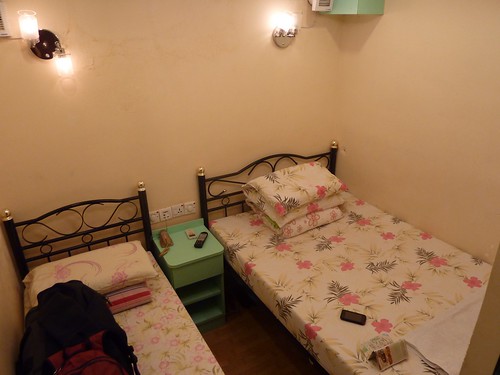 A bit too gulag for my tastes these days…
A bit too gulag for my tastes these days…
I stayed the two nights I'd paid for, but at the first chance I went to check out the LP-recommended place I'd always intended to find, and it was much better. For the same price – a mere three hundred Hong Kong dollars (about $40 CDN) – I got the window I wanted, and wifi. It's a place where I'm happy to unpack in for a few days.
But back to that first Saturday. I had no real plan once I'd unpacked back in my cell at Chungking Mansions, except that I wanted to wander around to check out the neighbourhood. It turned out that my location in south Kowloon – that's on the mainland, not on the actual island of Hong Kong - was very close to the Hong Kong Cultural Centre, Hong Kong Museum of Art, and Hong Kong Space Museum. Wandering around my eye caught on a big banner advertising a production of "The Turn of the Screw" and I realized that I was completely at liberty to go to that show if I wanted. There was no one else to consult, no group consensus to be reached, and nothing to do but turn my footsteps towards the sign and ask a few questions. It was brilliant, and invigorating, and reminded me of why traveling alone can be so much fun.
Well I didn't go to "The Turn of the Screw" – it was sold out. But I did go to a show that night – a production of Mozart's opera "Cosi Fan Tutti" at the Hong Kong Academy of Performing Arts. The show was good, and it was especially fun because it was all students – the full orchestra, the singers, the technicians – it reminded me of my own teaching experiences, and put a whole different spin on the evening. I even had dinner before the show in the student canteen, which was cheap and filling. And when those kids took their final bows that night (it was their last performance) you could just see the pride and relief and happiness in all of them. Much more heartfelt and heartwarming than a professional production. It was great.
My mood in Hong Kong is also helped along a lot because I've got a new local SIM card for my phone and though I can't seem to send text messages, it will connect me with all the fancy data services that make the iPhone so sexy. And let me tell you, traveling with a fully connected iPhone is totally brilliant. Now that I'm on my own again, my natural ability to proceed unerringly in exactly the wrong direction has reared its head again. I am completely unable to tell south from north in Hong Kong, and this is a significant obstacle to successfully navigating around the city. With the iPhone and Google Maps I always know where I am, and even what direction I'm facing. Even the simple compass function has saved my butt several times. If there was ever any doubt in my mind about whether the outrageous sum I paid for that phone in Dubai was worth it, it has long since vanished.
On Sunday I had a full day checking out some of the tourist sites on the island of Hong Kong. I started out by taking a double-decker tram all the way out to Sheung Wan, in the west end of the island. Hong Kong has the world's only double decker tram system, and it's fun and cheap, only $2.00 HK (about 30 cents) for a ride. I was lucky enough to snag a seat on the top deck, and had a great time watching Hong Kong roll by.
Out in Sheung Wan I did a little walking tour of the neighbourhood and had a really nice lunch. I actually ended up using a knife and fork for all three meals that day, which is the first time that's happened since I arrived in Beijing. Sheung Wan has a few touristy Western style spots like the place I had lunch, but a lot of it is still quite traditional, and the area I started in was packed with shops selling dried seafood and other critters. These are all over the place, not just in Sheung Wan, but also in most commercial areas. Some are obviously small Mom and Pop places, but some are very posh, with fancy decor and mirrors and elegant display cases. It's almost like a jewelry store, except instead of diamonds and precious metals, the bins are full of unidentifiable shriveled brown things.
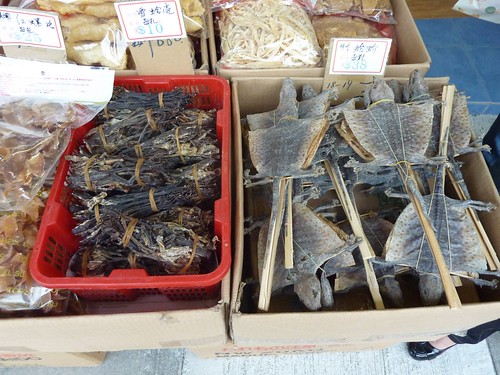 Critters like these guys. I don't know if they're food, or medicine, or offerings or home decor…
Critters like these guys. I don't know if they're food, or medicine, or offerings or home decor…
There were a few nice street market areas too, including one that had antiques and bric-a-brac. (Nice photo of interesting watches and clocks with magnifying crystals is posted over at Flickr, just for you, Ian.) After wandering Sheung Wan I made my way to the world's longest escalator! In fact, it's not a single escalator, but the longest escalator system. According to Wikipedia: "In Hong Kong, tens of thousands of commuters travel each work day between Central, the central business district, and the Mid-levels, a residential district hundreds of feet uphill, using this long distance system of escalators and moving walkways. It is the world's longest outdoor escalator system (not a single escalator span), at a total length of 2,600 feet (790 m)." It was pretty cool, though I was a bit disappointed that it wasn't one enormously long escalator (like on The Simpsons!).
The escalator goes right through the SoHo district, and you could look out over the streets as you rode by and check out the many many many restaurants and shops. Eventually I split off from the escalator system and headed for the station to catch the aforementioned tram to Victoria Peak (know locally simply as "The Peak"). The tram has been in operation since 1888, and was built as a means of opening Victoria Peak up to residential development. It's mostly used by tourists now, though still available for residents. There are even intermediate stops on the way to the Peak, for people who live part way up. It was a bit of a madhouse when I was there, since it was a sunny Sunday afternoon and the tourists were out in force. I had a fairly long wait to get on the tram because it's quite small and the crowd was quite large.
When I finally got on the ride was nothing special, except for the somewhat nervous-making bits where the grade was about 48%. At the top I'd been expecting a sort of verdant park-like area with a nice lookout and perhaps a small and pleasant café. Instead, the tower at the top was more like a big mall with a Madame Tussaud's and tons of restaurants and weird shops selling things like remote control cars that would drive on the wall and micro-sized video projectors built into sunglasses and crap like that. Very odd. There was a nice lookout, but you had to pay extra to access it (Thank you, Octopus card).
I wandered about, took lots of photos, and then left the weirdly commercial area to seek out that verdant park-like business that I'd come for. I found it a little way further up the hill where there was a small park filled with local people and kids and dogs. I sat and read my book for a while, rested my feet, and contemplated doing a 3.5 km walk that looped through even more verdant hilliness. My brain was vaguely in favour of the notion but my feet were strongly opposed and carried the vote 2-1. So I made my way back down on the tram and to the metro and returned to my temporary 'hood. There I hastened to the Irish pub down the street from my prison cell where Happy Hour had already started. I enjoyed a nice pint of Guinness on tap and an all-day full Irish breakfast, and watched the last few matches in the Hong Kong Sevens rugby tournament. (Canada won the Bowl. Or the Spoon. Or maybe it was the Spatula. Something, anyways. They award a lot of prizes named after dishes and such in this tournament. But yay Canada!)
It was a great first few days in Hong Kong. I felt reinvigorated and happier to contemplate the remaining two months of my trip than I've been in a long long time. And there's more to tell about Hong Kong too, so as usual you'll have to wait for me to stop doing things long enough to write about them. But don't hold your breath because there's a lot of doing still to do.

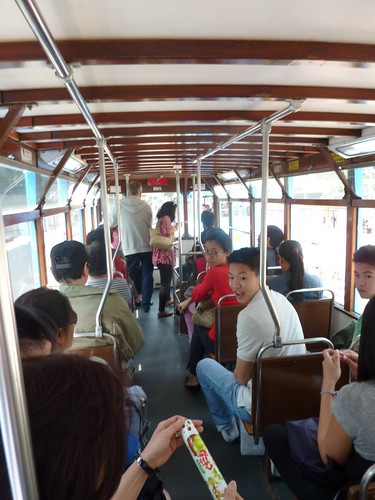
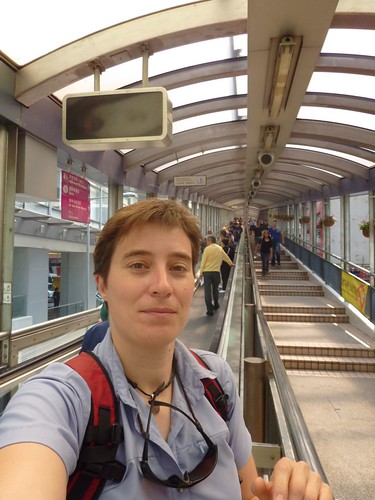
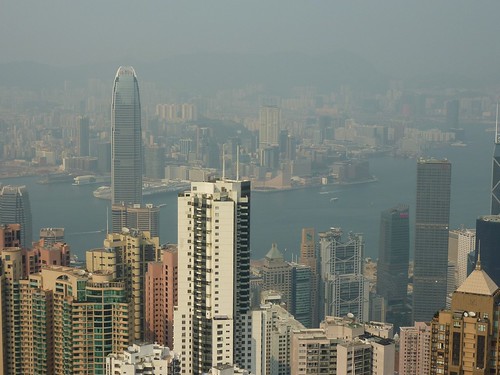
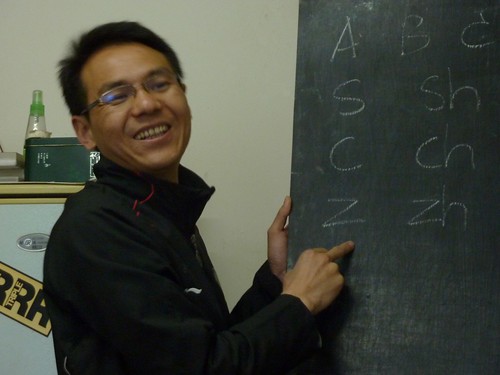
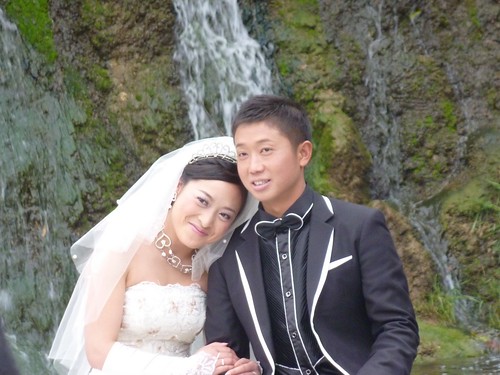
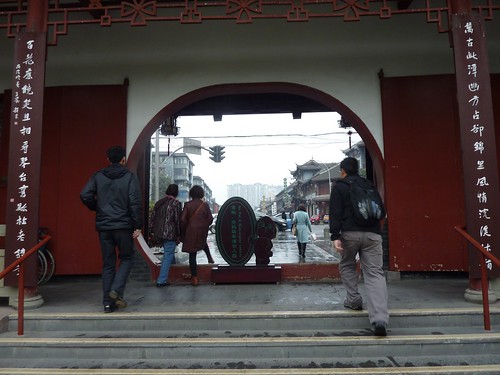

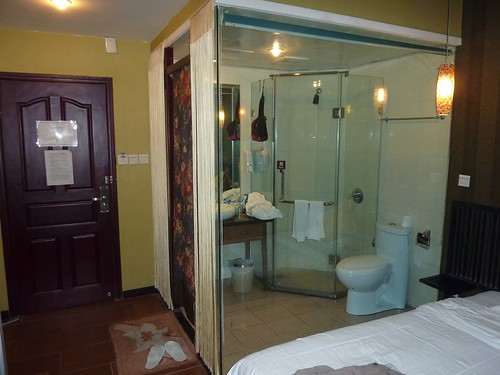

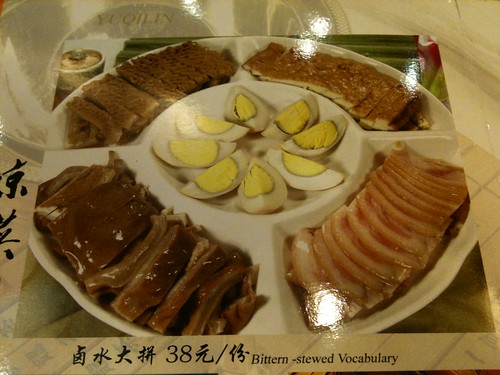
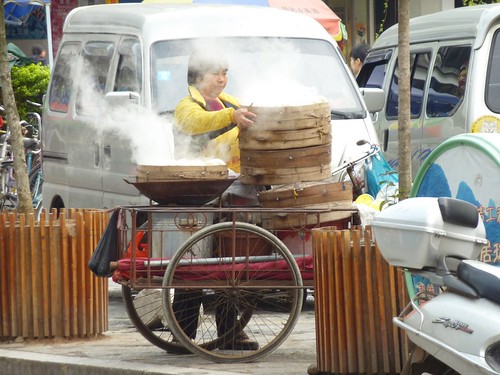

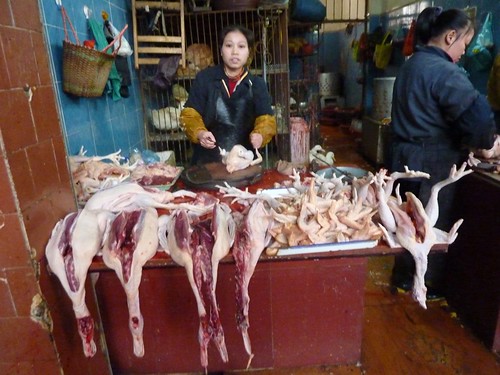
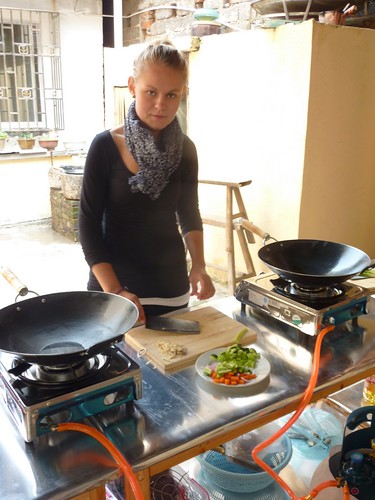
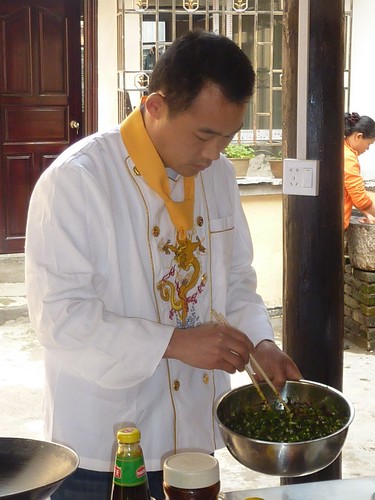
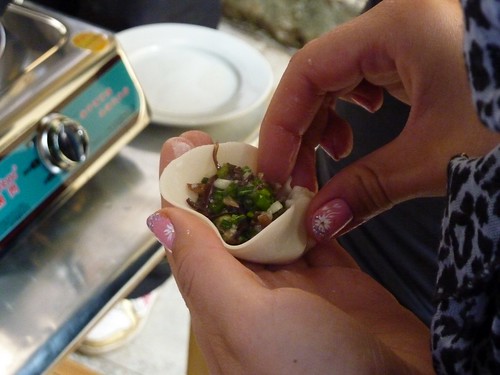


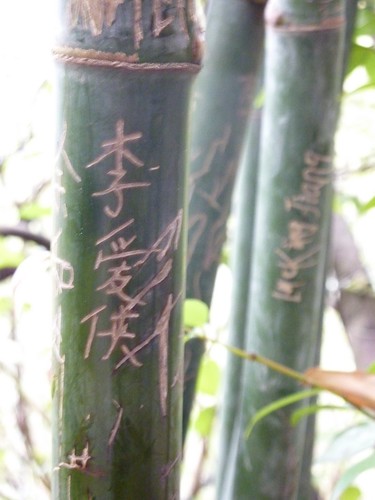

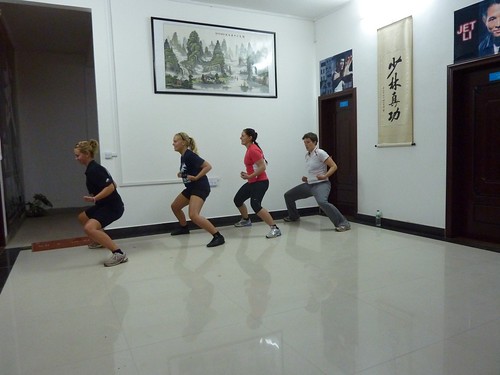
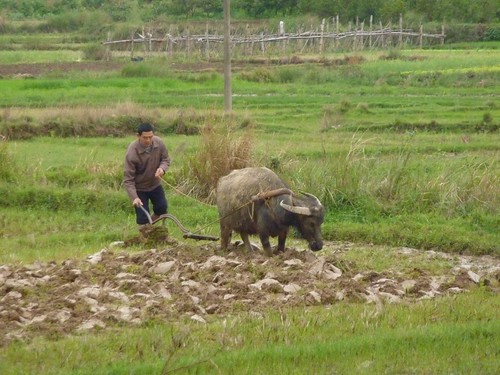
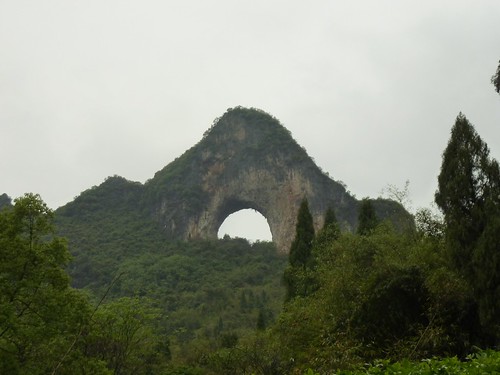
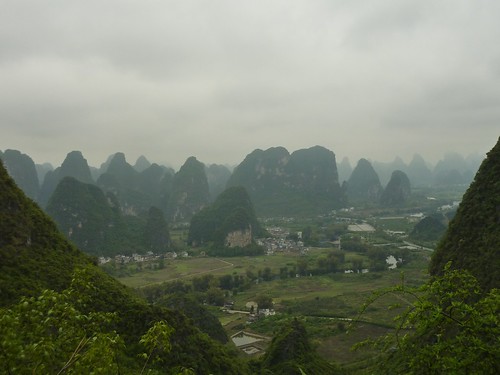
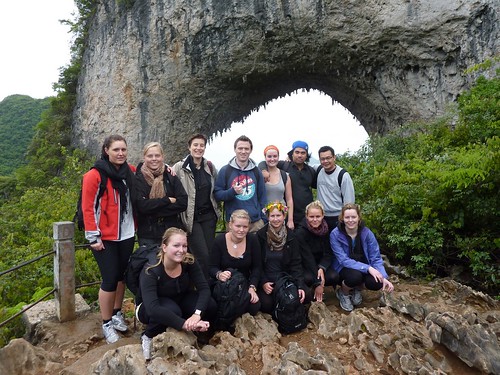

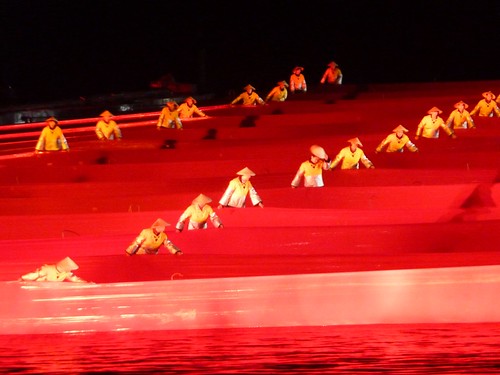
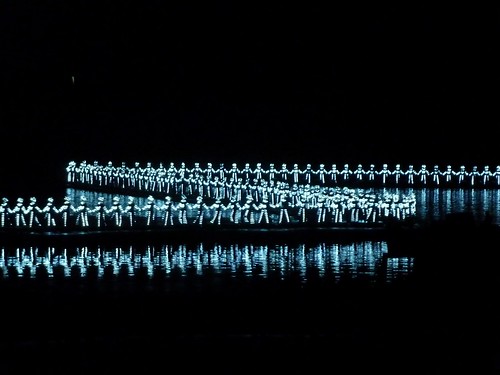
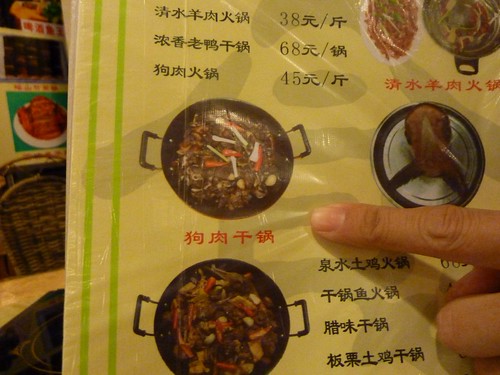
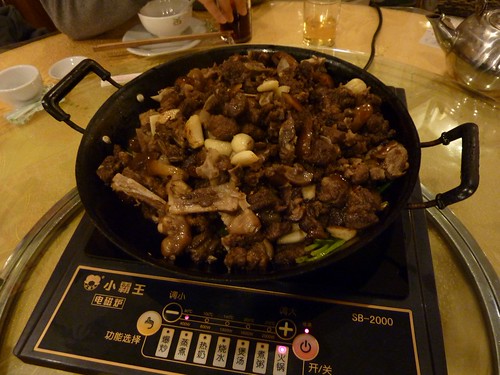 Here it is, the lower left hand corner shows one of the toe bones in question.
Here it is, the lower left hand corner shows one of the toe bones in question.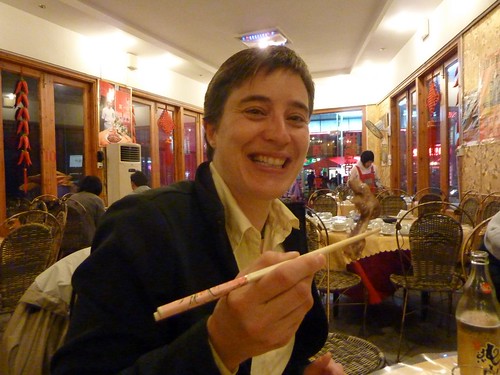
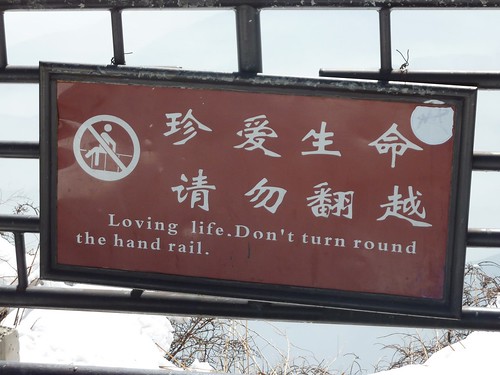
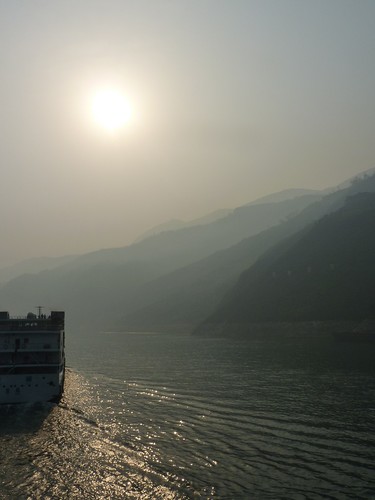

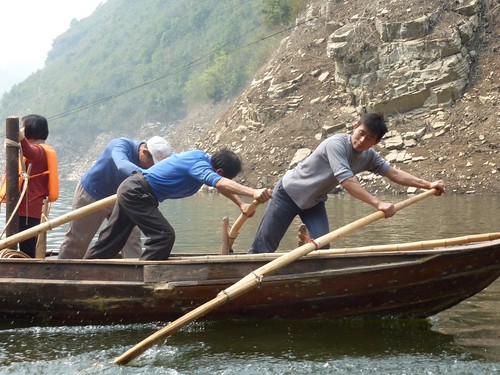 The Tujia boatmen, hard at work
The Tujia boatmen, hard at work 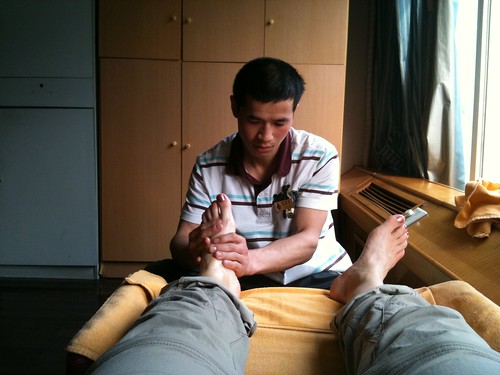
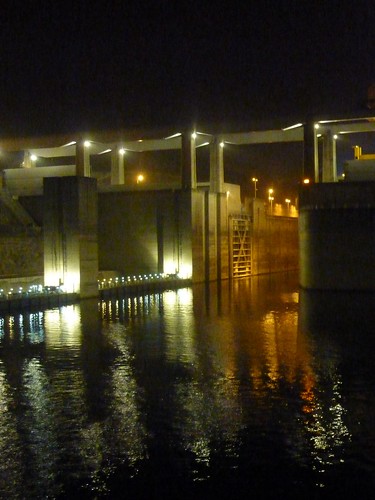 Waiting in the queue for the locks. We couldn’t enter until there were enough ships to fill up the whole lock.
Waiting in the queue for the locks. We couldn’t enter until there were enough ships to fill up the whole lock.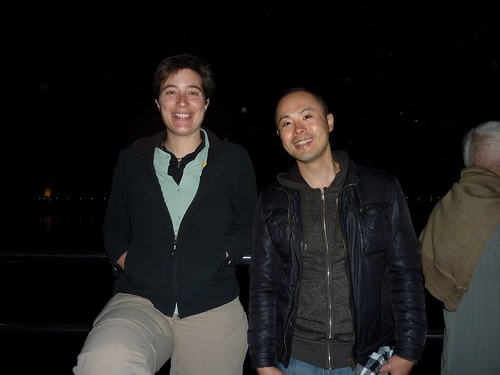
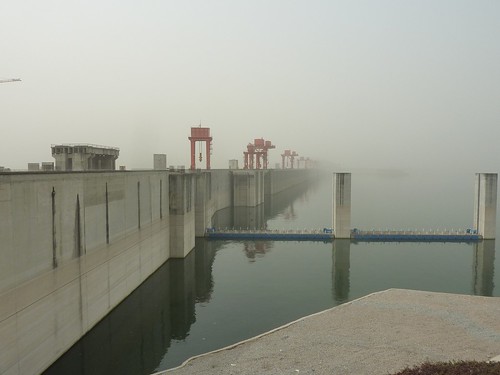

 Cabin number 217 – cozy, and ALL mine!
Cabin number 217 – cozy, and ALL mine!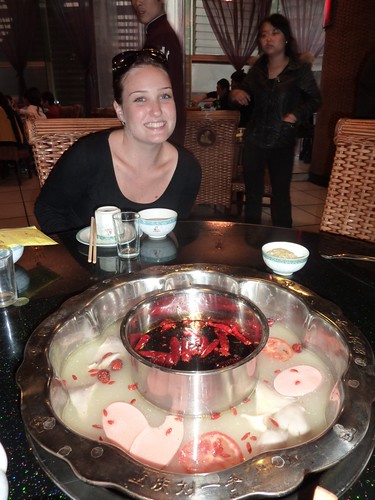 Jess, posing with our hotpot
Jess, posing with our hotpot
 The meat-eating ghost. Note I didn’t mention what kind of meat…
The meat-eating ghost. Note I didn’t mention what kind of meat…